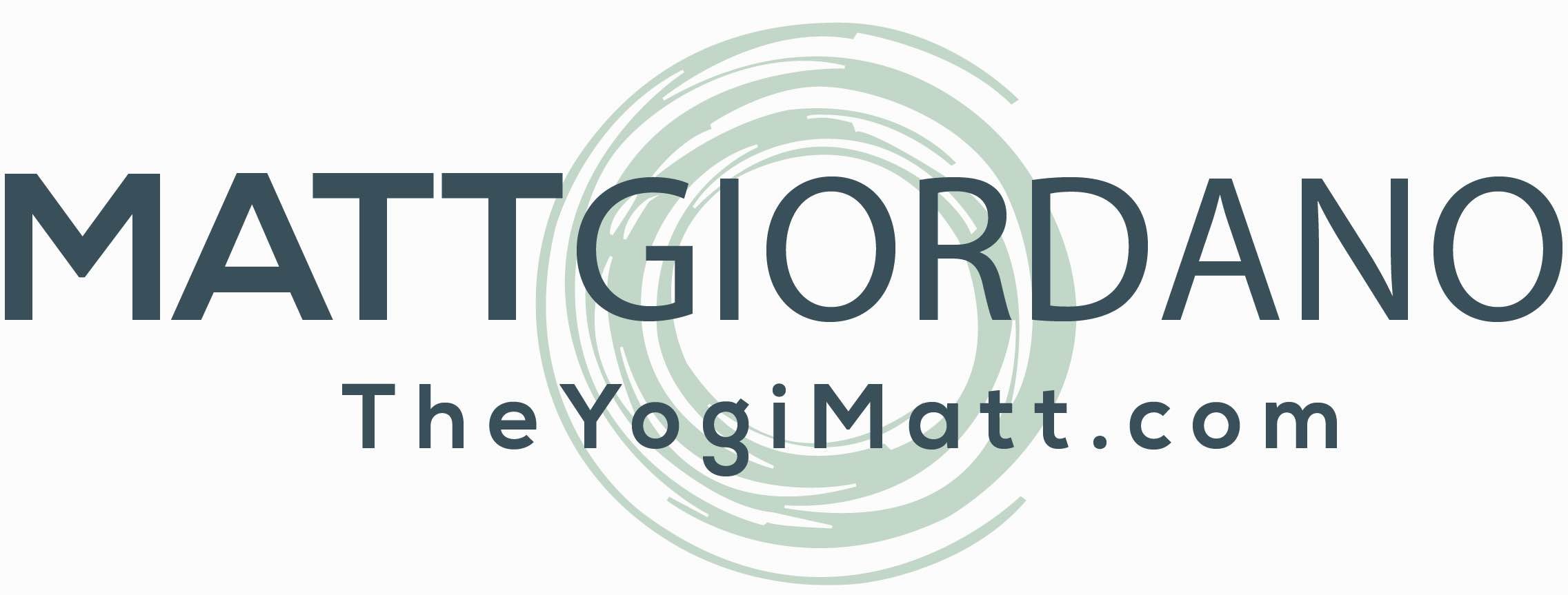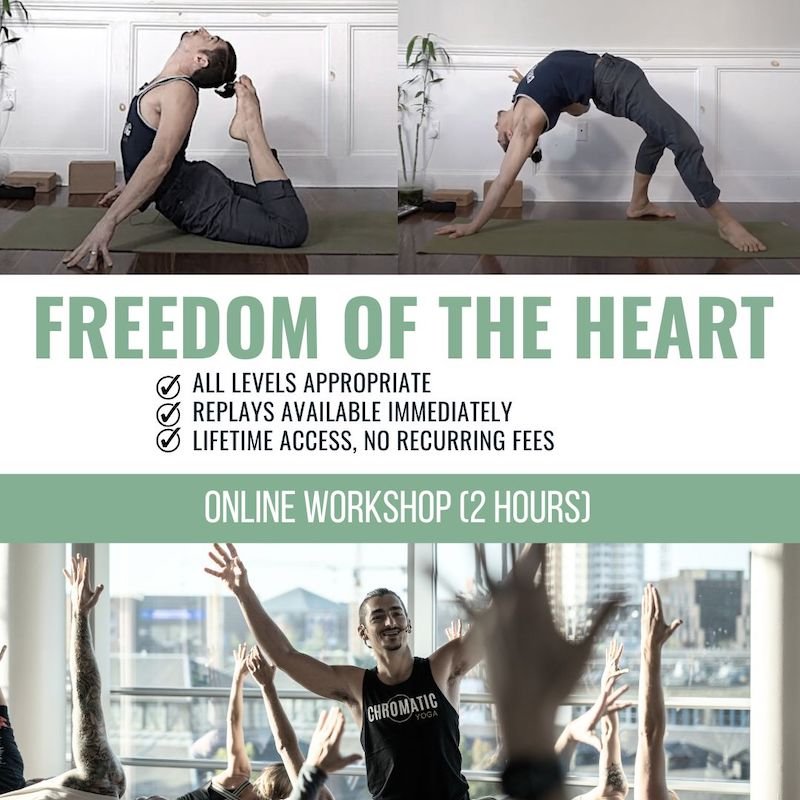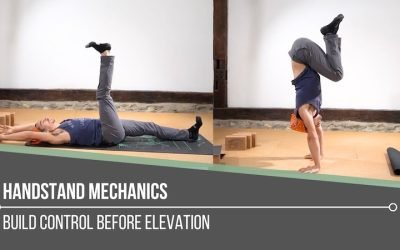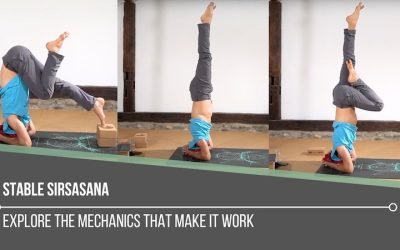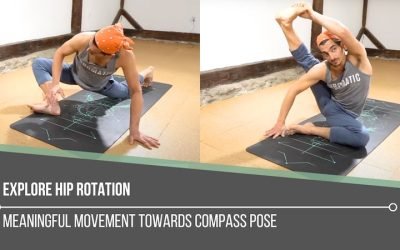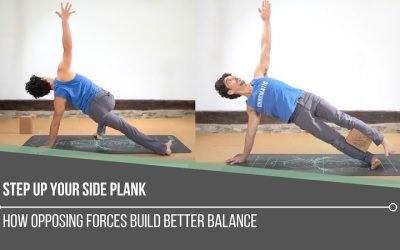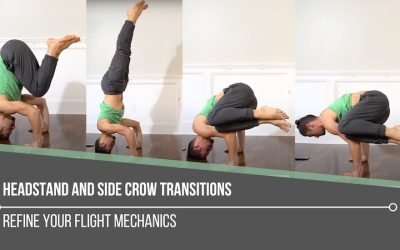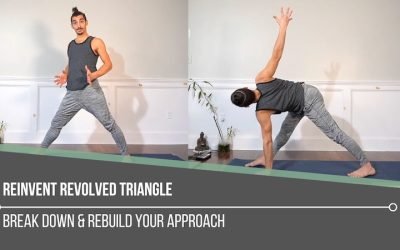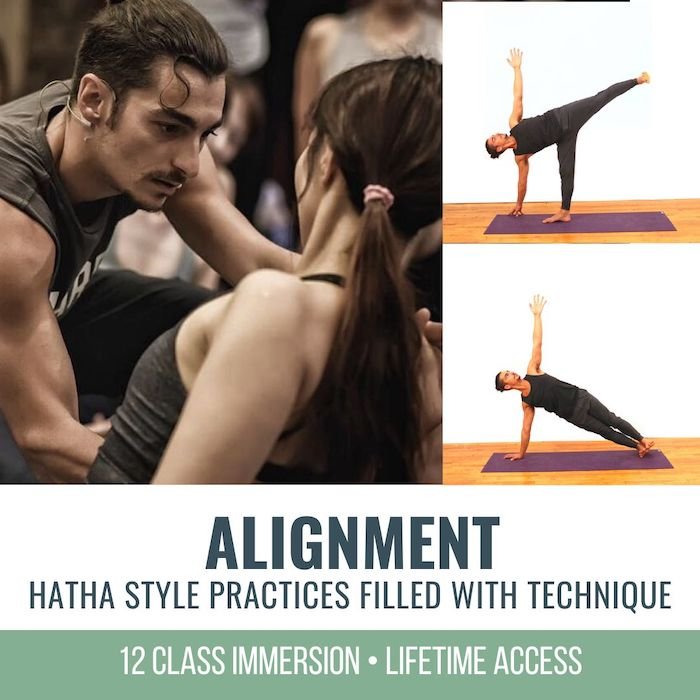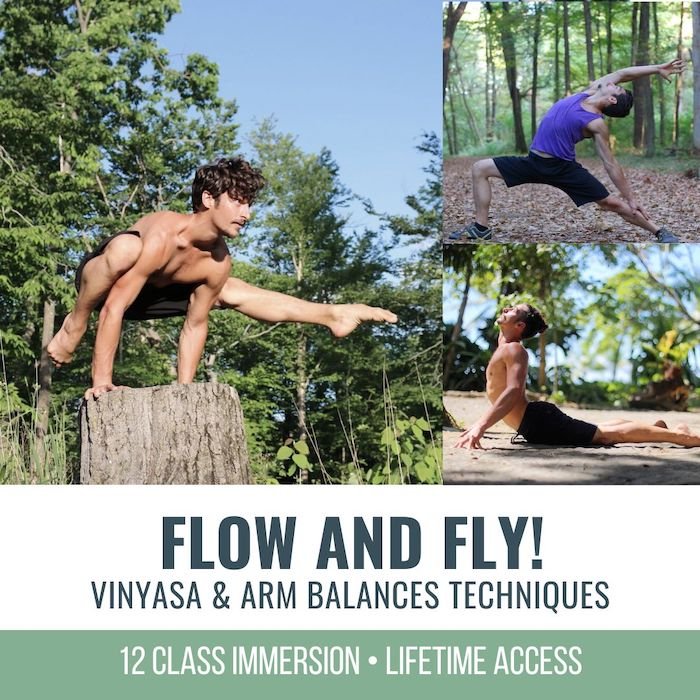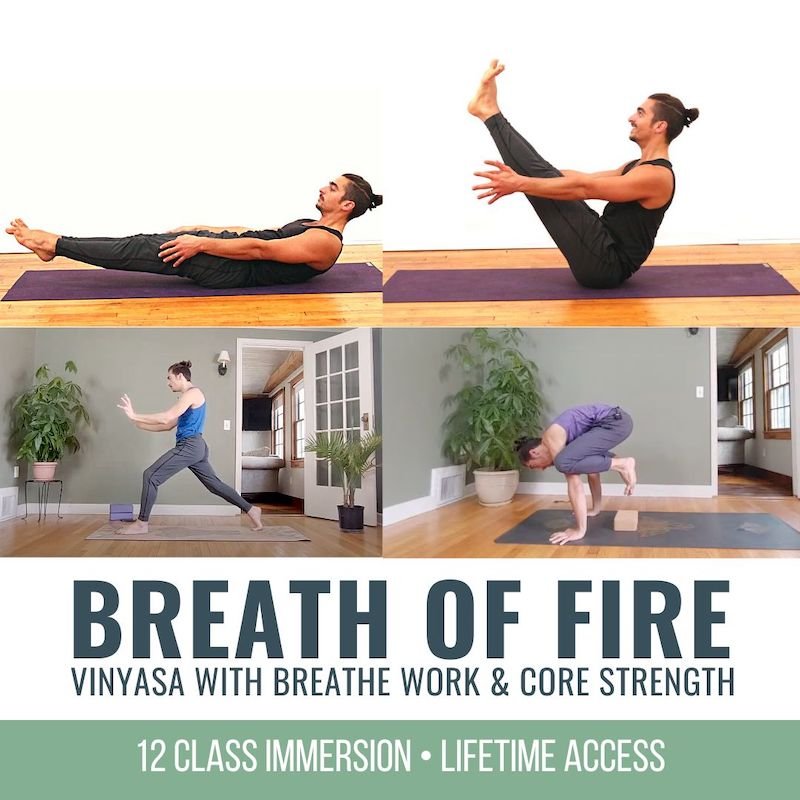Handstand MechanicsINVERSIONHANDSTAND MECHANICS Stability, strength, and coordination come together in the pursuit of mastering handstand mechanics. One of the most critical foundations is internal rotation at the hip joints, which can aid with certain entries and...
Steps To Scorpion Pose
Steps to Scorpion Pose
vrschikasana
SCORPION POSE
Exhilarating, stimulating, and enlivening are a few words we can use to describe Scorpion Pose. We can also use words such as grounding or even relaxing, which might initially be considered strange descriptors. When we explore and apply Matt’s techniques in a methodical way, we begin to understand that Scorpion requires both strength and a degree of softening and letting go. Once we get into the intricacies of this backbend, we adopt the ability to “relax” into it.
Further, we develop the gift of discernment. The challenging nature of the posture forces us to use caution in exploring what works for our individual bodies. The journey reveals a deep discovery of the self.
FREEDOM OF THE HEART
- Learn how to access pain-free heart openers
- Technique-infused 2-hour workshop
- Step-by-step tutorials for each heart opener
- Decrease low back discomfort
- Increase spinal strength, stability, and support
- Improve your standing and seated postures
- Improve the flexibility of commonly stuck muscle groups
- Injury Awareness: Avoiding spinal compression
- Debunk popular alignment with anatomy knowledge
- Skillfully guided sequence by the founder of Chromatic Yoga, Matt Giordano
- LIVESTREAM DATE: June 9 at 10am Eastern Time (NYC Timezone)
- REPLAY: Available immediately, lifetime access
MOBILIZE THE SPINE
Matt teaches techniques to prepare more specifically.
In preparatory postures, there’s more that takes place than simply arching the back or assuming that it’s enough to anteriorly tilt the pelvis.
Throughout a backbend practice leading up to Scorpion Pose, pulling the belly in and up helps create a spaciousness in the spine that minimizes compression. The action activates the transversus abdominis and engages the back muscles for support, and it shifts the vertebrae and intervertebral discs forward. Here, we also utilize discernment. Yes, we are trying to lift and send each vertebra more forward, but we must also tap into which segments of the spine feel more “stuck.” Going to the position that feels doable is key. We can use this information in further supplementary work in this asana practice or in others.
WATCH THE VIDEO
STEPS TO SCORPION POSE: BACKBEND TECHNIQUES CLARIFIED
KING COBRA PREPARATION
After many postures and positions that contribute to preparing for Scorpion Pose, Matt teaches King Cobra. He notes that it’s a great posture to explore as part of the Scorpion toolkit because it provides almost the same joint relationships. The difference is that it’s flipped over, with the belly as the base of support.
In the video, Matt offers 2 variations. One variation makes use of a bolster, which provides support under the rib cage. Using the bolster provides feedback as to how much we are lifting and lengthening the abdomen when we send the spine forward.
The variation without the bolster includes the cue about “softening.” It’s not that we shouldn’t soften when using the bolster; in the second variation, he’s simply reminding us when and where to implement this action.
200 HOUR ONLINE TEACHER TRAINING
GET CERTIFIED & DEEPEN YOUR YOGA PRACTICE
- Deepen your yoga practice
- Build confidence speaking in front of groups in person and online
- Learn foundational class structures and templates
- Learn techniques for a wide range of yoga postures
- Get certified and highly qualified to teach yoga
- Yoga Alliance Globally Recognized Certification Program
SCORPION STEPS
A key consideration is to de-emphasize touching the feet to the head in Scorpion Pose—body proportions play a role in whether or not this is actually possible. Emphasizing healthy and safe spinal extension will reap greater rewards.
Here are some key steps when practicing Scorpion at a wall:
- On all fours, turn the hands out and set them wide
- Soften the heart towards the ground
- Snake the chest through the shoulders
- Kick the feet up to the wall
- Reach into the wall with toes or heels
- Simultaneously reach the chest and the feet towards the wall
There’s no doubt about the strength required to follow these steps. The pattern practiced in King Cobra is recreated by softening down the chest while pulling towards the wall. Again, it’s this “relaxing” into the backbend that helps create the required space between the vertebrae.
300 HOUR ONLINE TEACHER TRAINING
GET 500 HOUR CERTIFIED AS A MASTER TEACHER
Master your skill set as a teacher through refined techniques, anatomy, biomechanics, sequencing, philosophy, meditation techniques, theming, yoga business, and much more!
- Get 500 hour certified
- Learn anatomy, biomechanics, asana techniques
- Expand your teaching skills
- Masterful sequencing and verbal delivery
- Learn meditation and breathwork techniques
- Transformative tools: theming, dharma talks, satsang
JOURNEY OVER DESTINATION
We can get caught up in the aesthetics of a robust posture like Scorpion Pose, but Matt always emphasizes that the beauty lies in the discoveries we make about ourselves. As we explore our potential, many opportunities are produced that help us learn more about the levels of our willingness to challenge ourselves and our ability to pull back when necessary. On a physical level, we learn about our capabilities and our limitations in a particular instance. With regular practice, we gradually transform our experience overall. Following precise techniques, along with a willingness to explore, supplies us with confidence.
We can apply this to Scorpion by calling the touching of the toes to the head the “destination” and all of the spinal explorations along the way the “journey.” If we let go of the destination, we can appreciate all of the outcomes of the journey.
Matt’s recent 2-hour online Freedom Of The Heart workshop reveals techniques and increased insight for stronger, safer backbends.
The 200 Hr. Teacher Training: Click Here to See the Next Start Date
The 300 Hr. Advanced Teacher Training: Click Here to See the Next Start Date
Article by Trish Curling
Video Extracted From: Inversion Immersion
ONLINE ANATOMY COURSE
- Accessible, exciting, and easy to learn
- Anatomy and biomechanics for yoga
- Appropriate for both teachers and students
- Learn joint alignment vs pose alignment
- Demystify yoga poses and transitions
- Release aches and pains
- Learn how to avoid common injuries
- Caters to all levels with modifications and props
- 20 hours Continued Education Credits with Yoga Alliance
- 20 hours toward Chromatic Yoga Certification and 300 Hour
- Lifetime access
Continue Learning
Handstand Mechanics
Stable Sirsasana
Stable SirsasanaHEADSTANDSTABLE SIRSASANA Creating a stable Sirsasana is less about the final pose and more about the mechanics that lead us there. From weight transfer and spinal alignment to hamstring flexibility and shoulder engagement, each layer matters. Unlike...
Explore Hip Rotation
Explore Hip RotationSURYA YANTRASANAEXPLORE HIP ROTATION Hip rotation isn’t just an anatomical concept—it’s an open invitation to become more intimate with our body’s story. In yoga, we often live in lateral (external) rotation, especially in hip-opening postures....
Step Up Your Side Plank
Step Up Your Side PlankVASISTHASANASTEP UP YOUR SIDE PLANK Side Plank might look simple, but true proficiency starts in the details. One of the keys to refining the posture is learning how opposing muscle groups create an isometric contraction—a subtle engagement that...
Headstand and Side Crow Transitions
Headstand and Side Crow TransitionsPARSVA BAKASANAHEADSTAND AND SIDE CROW TRANSITIONS Mastery begins with mechanics, especially when it comes to headstand and side crow transitions. Each posture on its own demands control, coordination, and a deep understanding of...
Reinvent Revolved Triangle
Reinvent Revolved TriangleTRIKONASANAREINVENT REVOLVED TRIANGLE “Now twist!” Sounds easy enough—until we realize the complexity hidden within the cue. Revolved Triangle is far more than just a twist. It’s a balance challenge, a hamstring and IT band stretch, a spinal...
THE FREE TECHNIQUE PACK
When You Subscribe, You Will Get Instant Access to
- the Technique Pack: 15 yoga pose breakdowns
- exclusive online course discounts
- exclusive blogs and videos
